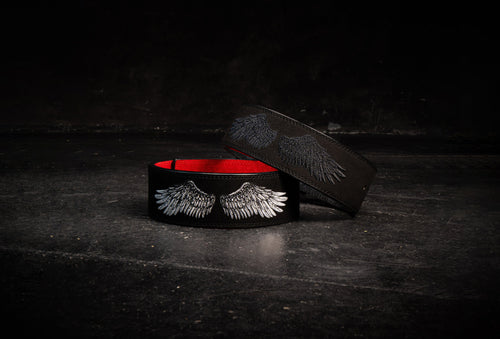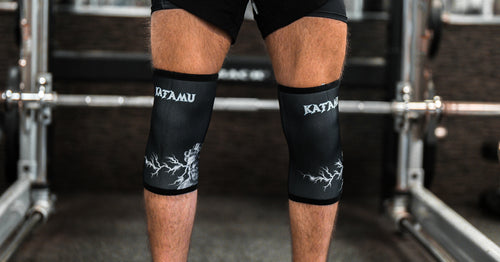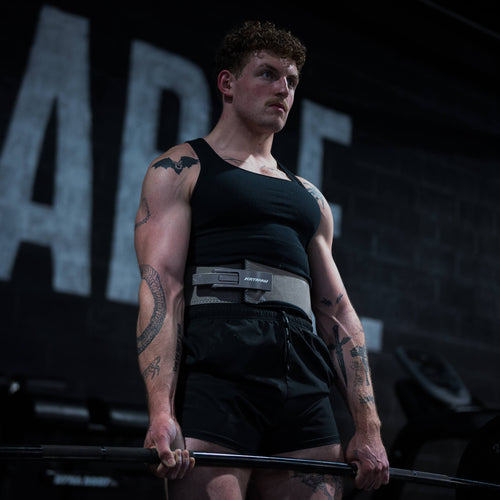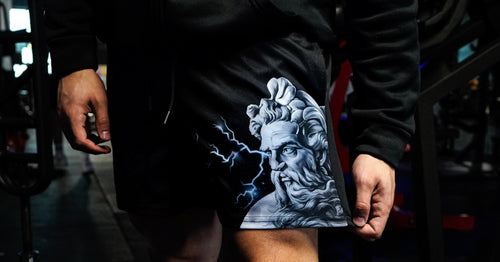Ready to take your lifts to the next level in 2025? The right weight belt can be a game changer for both performance and safety, whether you’re chasing personal records or just starting your fitness journey.
In this guide, we’ll reveal the top 10 weight belt picks that deliver unbeatable support, unmatched comfort, and long-lasting durability for serious lifters and everyday gymgoers alike.
You’ll discover the best types of belts, the latest features to look for, and which brands stand out for support, value, and innovation. Get ready to find your perfect fit and make every rep count.
Why a Quality Weight Belt Matters in 2025
The modern gym landscape is changing fast. With more people joining gyms and taking up strength sports in 2025, the need for reliable support gear is at an all-time high. Whether you are chasing a new deadlift max or just want to protect your back, investing in a quality weight belt is a smart move for lifters at every level.
The Evolving Role of Support Gear
The demands on today’s lifters go beyond just moving heavy weight. Athletes and everyday gymgoers now seek gear that boosts performance, prevents injuries, and adapts to various training styles. A weight belt is no longer just for powerlifters—CrossFitters, bodybuilders, and even recreational lifters use them to enhance their workouts.
Recent trends show a surge in gym memberships and participation in strength sports, reflecting a global focus on health and strength. This increase means more people are looking for ways to lift safely and maximize progress. The right weight belt can be the difference between steady gains and frustrating setbacks.
How Weight Belts Reduce Injury Risk
One of the main reasons lifters choose a weight belt is injury prevention. Heavy squats, deadlifts, and overhead presses place immense stress on the lower back and core. A well-fitted weight belt helps stabilize the spine, allowing you to lift heavier with less risk. Research shows that proper belt use can significantly reduce the chance of common lifting injuries, such as strains and herniated discs.
According to certified coaches and elite athletes, a belt acts as a physical cue to brace your core, reminding you to maintain proper form. For a deeper dive into the science and real-world benefits, check out this Benefits of a Lifting Belt resource.
The Science: Intra-abdominal Pressure and Performance
What makes a weight belt so effective? It all comes down to intra-abdominal pressure. When you wear a belt and brace your core, you create a pressurized cylinder that supports your spine from all angles. This pressure acts like an internal weightlifting suit, allowing you to handle heavier loads with better stability and less fatigue.
Studies confirm that increasing intra-abdominal pressure with a weight belt leads to safer, stronger lifts. This is especially important as more lifters push their limits in 2025, seeking new personal bests.
When and How to Use a Weight Belt
Knowing when to use a weight belt is just as important as having one. Not every set or exercise requires a belt. Experts recommend using it for maximal or near-maximal lifts, like heavy squats and deadlifts, rather than for every movement. Training your core without a belt is crucial for balanced strength.
Choosing a belt that matches your body and lifting style is vital. The right size, material, and closure system ensure comfort and effectiveness. Take time to measure your waist and check sizing guides before investing, as a proper fit makes all the difference in both safety and progress.
Key Features to Look for in the Best Weight Belts
Choosing the right weight belt is more than just picking the first one you see on the shelf. In 2025, lifters have access to a variety of innovative designs and materials, making it easier to find the perfect match for every training style. Let’s break down the essential features you should look for before investing in a new weight belt.
Material and Construction: Leather, Nylon, and Hybrid Choices
The material of your weight belt directly affects its support, flexibility, and longevity. Leather belts remain the gold standard for powerlifting and heavy strength work. They provide rigid support, especially for maximal lifts. Nylon belts, on the other hand, offer more flexibility and comfort, making them popular among CrossFit athletes and those who perform dynamic movements.
Hybrid belts are gaining traction in 2025, blending the best of both worlds. These often combine a leather core for support with a nylon outer for comfort and style. When evaluating construction, check for reinforced stitching and high-quality hardware. Well-made belts will stand up to years of tough workouts and protect your core during every rep.
Buckles, Sizing, and Fit: Getting the Right Support
Buckles play a crucial role in how a weight belt feels and performs. Lever buckles offer quick, secure adjustments and are often favored by powerlifters for their reliability under load. Prong buckles provide a classic look and allow for incremental changes in fit. Quick-locking or Velcro closures are ideal for functional training, offering speed and flexibility.
Getting the right size is essential for both safety and comfort. A poorly fitted weight belt can limit your performance or even cause discomfort. For a step-by-step guide on proper sizing, check out this Weightlifting Belt Sizes Guide. Always measure your waist where the belt will sit, not your pant size, and consult manufacturer charts for the best match.
Thickness, Width, and Durability
The thickness and width of a weight belt determine how much support it offers. Belts typically range from 4mm to 13mm thick. Thicker belts (10mm or 13mm) are best for maximal loads and competition use, while thinner options provide more comfort for general training. Width matters too: 4-inch belts are common, but narrower belts may be better for smaller frames or Olympic lifts.
Durability is a must. Look for double or triple stitching and solid metal hardware. Quality belts resist stretching and maintain their shape over time. Before buying, check for warranties and read user reviews to gauge long-term satisfaction. Remember, a well-built weight belt is an investment in your safety and lifting future.
2025 Innovations and Brand Support
This year, weight belt manufacturers are introducing exciting innovations. Antimicrobial linings help keep your belt fresh between sessions, while eco-friendly materials cater to the sustainability-minded athlete. Some brands now offer fully customizable options, from colors to embroidery, letting you express your style.
Don’t overlook brand reputation and support. Reliable customer service, generous warranties, and high user ratings are all signs of a trustworthy weight belt brand. Whether you’re a powerlifter, CrossFit competitor, or recreational lifter, the right features will maximize your confidence and performance under the bar.
Top 10 Weight Belt Picks for Maximum Support in 2025
Looking for the best weight belt in 2025? This year, we've seen innovations that blend style, support, and durability for every kind of lifter. Our list is based on expert testing, real user reviews, construction quality, price, and unique features. Whether you're chasing a new personal record or just want safer, stronger lifts, these weight belt picks deliver unmatched value and performance.
Katamu Premium Lever Belt
The Katamu Premium Lever Belt stands out in 2025 for its blend of style and substance. Priced affordably, it comes in multiple sizes to fit all body types. The premium lever mechanism lets you adjust your weight belt quickly between sets, making it perfect for lifters who value convenience.
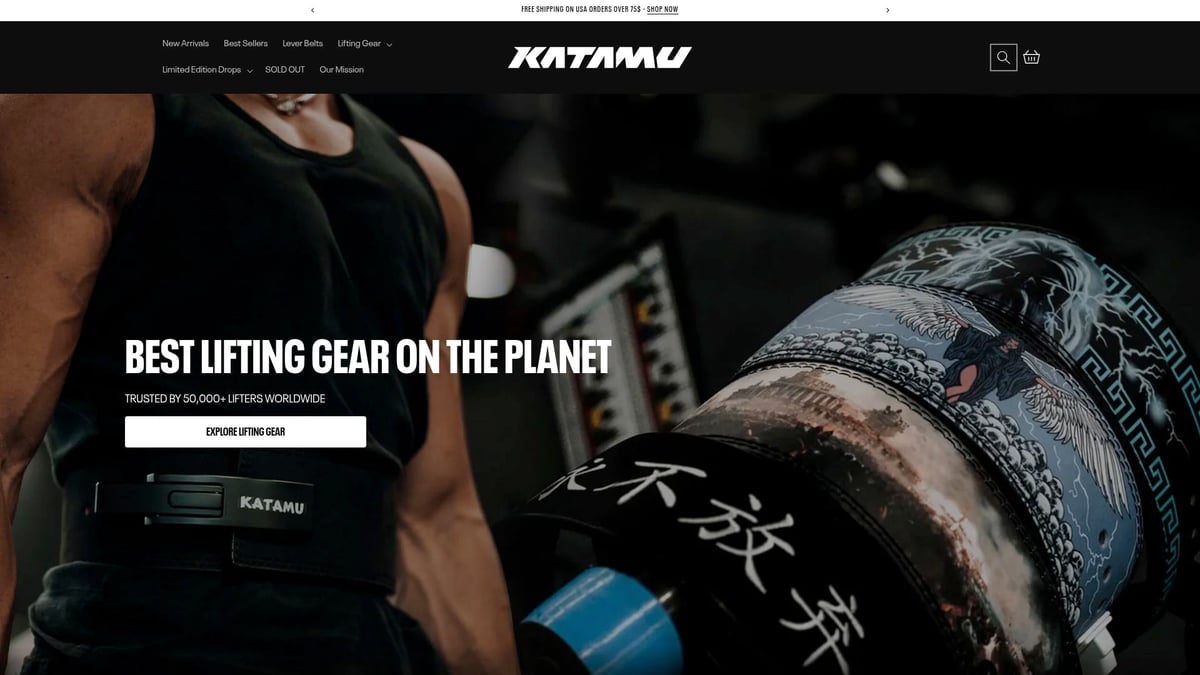
Crafted with high-grade leather and reinforced stitching, this weight belt offers long-term durability and reliable core support. Modern designs appeal to both serious athletes and style-focused gymgoers. It's ideal for powerlifting, bodybuilding, or anyone needing all-purpose gym support.
Pros: Durable, stylish, easy lever adjustment, excellent core support.
Cons: Lever belts may not suit all competition rules.
Unique selling point: Premium quality meets accessible pricing and standout looks. This weight belt is a favorite for those who want strong performance without sacrificing style.
Gymreapers 10mm Lever Belt
The Gymreapers 10mm Lever Belt is designed for dedicated powerlifters and strength athletes. With a competitive price and a variety of sizes, this weight belt features a 10mm thickness for the perfect balance of support and flexibility.
The lever buckle allows for fast, secure adjustments, so you can focus on your lifts without delay. High-quality leather construction ensures this belt holds up during your toughest sessions. A lifetime warranty backs up its durability, making it a smart investment for any serious lifter.
Pros: Sturdy, reliable, easy to use.
Cons: Slightly stiff during the initial break-in period.
Key benefit: Trusted by competitive lifters for maximum support during personal record attempts, this weight belt is a staple in strength sports.
Rogue Ohio Lifting Belt
Rogue’s Ohio Lifting Belt is a classic choice in the weight belt market. Available in various sizes, its price reflects the premium American leather and vegetable tanning process that boosts longevity.
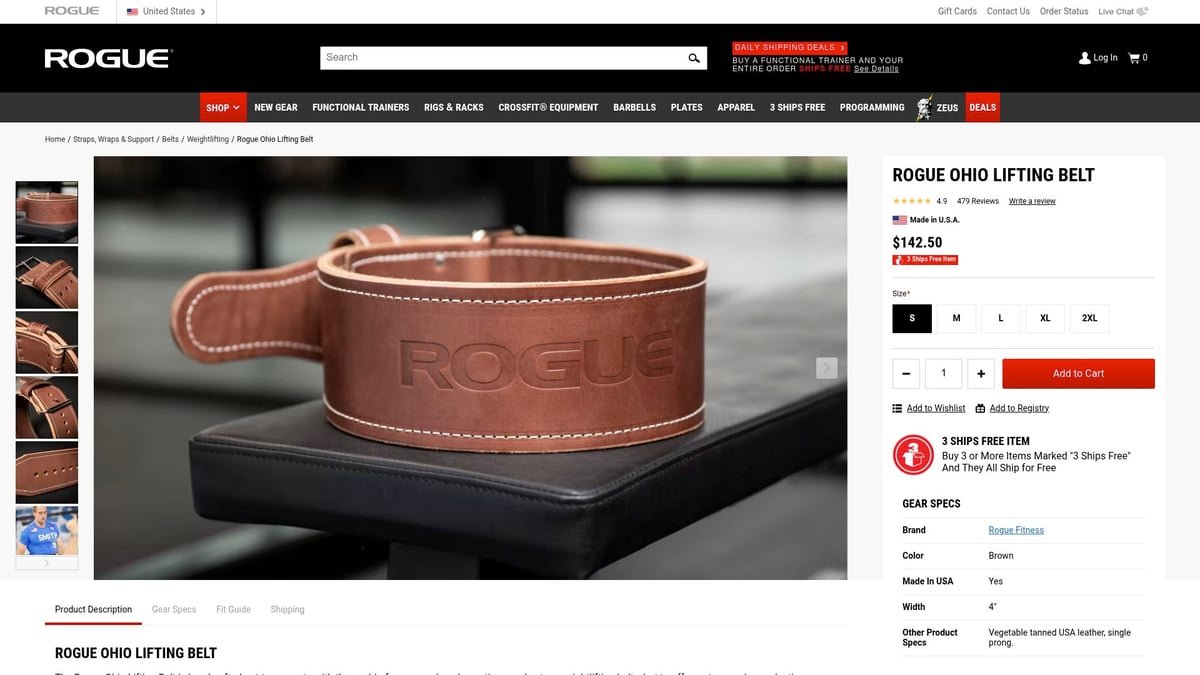
A single-prong buckle gives a traditional, easy-to-adjust fit. The 10mm thickness is competition-legal in most federations, making it a top pick for serious lifters, powerlifters, and Olympic weightlifters.
Pros: Top-tier craftsmanship, competition-legal.
Cons: Higher price compared to some alternatives.
Unique selling point: Handcrafted in the USA with a stellar reputation for durability, this weight belt is built for years of heavy lifting.
SBD 13mm Lever Belt
If you need maximum support, the SBD 13mm Lever Belt is a heavyweight champion. With a premium price and a range of sizes, this weight belt is 13mm thick, offering superior stability under the heaviest loads.
The patented lever design ensures a precise fit and easy release. IPF approval means it’s trusted by elite powerlifters worldwide. While it’s heavier and less flexible for beginners, advanced athletes will appreciate its extreme support.
Pros: Extreme support, reliable lever, competition-approved.
Cons: Less flexible, heavier for new lifters.
Unique selling point: Used by world champions, this weight belt is engineered for record-breaking lifts on the biggest stages.
Pioneer Cut Powerlifting Belt
Pioneer Cut Powerlifting Belt brings true customization to weight belt design. Pricing varies, with options for custom colors and embroidery. The patented Pioneer Cut allows half-inch hole spacing, giving you micro-adjustments for a personalized fit.
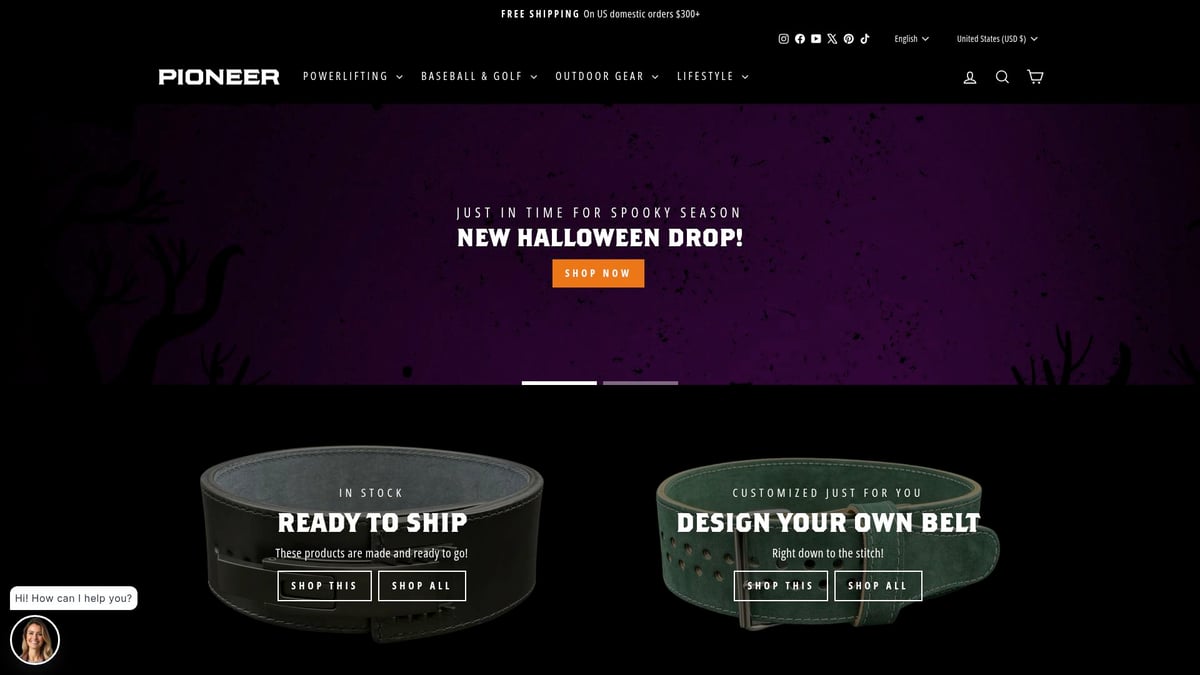
Made with premium leather, it features a prong buckle—a favorite for lifters who prefer classic style. This weight belt is ideal for powerlifters and anyone who values precision and comfort.
Pros: Exceptional adjustability, custom look.
Cons: Custom orders may take longer to ship.
Unique selling point: Personalized fit and standout style. For those who want their weight belt to reflect their personality and needs, Pioneer is unmatched.
Iron Bull Strength Quick-Locking Belt
The Iron Bull Strength Quick-Locking Belt is built for athletes who need quick changes and agile movement. Priced competitively, it comes in several sizes and uses a quick-locking buckle for fast, reliable fit.
Nylon construction offers flexibility and comfort, making this weight belt a go-to for CrossFitters and functional fitness fans. Lightweight yet supportive, it's great for dynamic workouts and frequent transitions.
Pros: Easy on/off, comfortable, versatile.
Cons: Not as rigid as leather belts for max-effort lifts.
Unique selling point: Blends support and agility, perfect for high-intensity workouts where speed and comfort matter.
Element 26 Self-Locking Belt
Element 26’s Self-Locking Belt is designed for lifters who prioritize safety and freedom of movement. Available at a reasonable price, this weight belt features a self-locking mechanism for consistent, secure support.
Durable nylon and a minimalist design make it suitable for Olympic lifting, CrossFit, and functional fitness. It’s USAPL and competition-approved, so you can use it in official events.
Pros: Lightweight, secure, competition-legal.
Cons: Offers less support for extreme powerlifting loads.
Unique selling point: High safety factor thanks to self-locking technology. Trusted by coaches and athletes alike, this weight belt is a favorite in gyms nationwide.
Dark Iron Fitness Genuine Leather Belt
Dark Iron Fitness offers a genuine leather weight belt that’s perfect for beginners and intermediate lifters. With affordable pricing and multiple sizes, this belt provides comfort right out of the box.
A double-prong buckle adds extra security, while the 4-inch width supports all lifting styles. The soft leather breaks in quickly, making it a great choice for those new to using a weight belt.
Pros: Comfortable, affordable, fast break-in.
Cons: Not as thick as competition-level belts.
Unique selling point: An entry-level leather weight belt with a premium feel, perfect for those starting their strength journey.
Inzer Advance Designs Forever Lever Belt
The Inzer Forever Lever Belt is built for serious lifters who want a long-term investment. Available in both 10mm and 13mm thickness, this weight belt comes in a variety of colors and features a lever buckle for an ultra-secure fit.
With a lifetime guarantee, this belt is trusted by powerlifters worldwide. Although it’s stiff initially and has a premium price, its durability is unmatched.
Pros: Extremely durable, customizable, easy-to-use lever.
Cons: Stiff at first, higher cost.
Unique selling point: Made to last forever, this weight belt is an excellent investment for anyone committed to lifting.
Harbinger 4-Inch Nylon Weightlifting Belt
The Harbinger 4-Inch Nylon Weightlifting Belt is the top budget-friendly option for 2025. It’s priced accessibly and available in several sizes, making it great for new lifters and casual gymgoers.
Contoured, flexible nylon offers comfort and support, while a hook-and-loop closure lets you adjust quickly. Lightweight and portable, this weight belt is perfect for fitness classes and travel.
Pros: Affordable, comfortable, easy to use.
Cons: Not designed for heavy powerlifting.
Unique selling point: The best all-purpose weight belt for those seeking value and versatility without sacrificing comfort.
For those ready to take the next step, you can Shop Top Weight Belts and find the perfect fit for your goals and training style. With so many options, there’s a weight belt here for every lifter in 2025.
How to Choose the Right Weight Belt for Your Goals
Choosing the ideal weight belt is a game-changer for your lifting journey. The perfect fit can boost your confidence, keep you safe, and help you break personal records. But how do you decide which weight belt truly matches your unique goals and training style?
Understanding Your Lifting Style
Before shopping for a weight belt, ask yourself: What type of training do you do most? Powerlifters often need maximum core support for squats and deadlifts, while Olympic lifters benefit from flexibility for dynamic movements.
CrossFit athletes need a weight belt that balances support and quick adjustability for varied workouts. General fitness enthusiasts may prefer lightweight, comfortable options for all-purpose use. If you are considering other supportive gear, check out this Deadlift Straps vs Weight Belts guide to see how different tools can complement your routine.
Identifying your primary lifting style helps narrow down the best weight belt for your needs and ensures you get the right level of support.
Finding the Right Fit and Features
Proper fit is essential for both safety and comfort. Measure your waist at the navel, not your pant size, and always refer to the manufacturer’s sizing chart. A weight belt that is too loose or too tight can limit its effectiveness.
Consider the thickness and width based on your goals. Powerlifters may opt for thicker, wider belts for more support, while CrossFit or Olympic lifters often choose slimmer, flexible designs. Look for features like antimicrobial linings or eco-friendly materials if you value innovation and hygiene.
Review the table below for a quick overview:
| Lifting Style | Recommended Thickness | Belt Width | Material |
|---|---|---|---|
| Powerlifting | 10-13mm | 4 inches | Leather |
| Olympic Lifting | 6-10mm | 3-4 inches | Nylon/Leather |
| CrossFit/HIIT | 4-6mm | 3 inches | Nylon |
| General Fitness | 4-6mm | 3-4 inches | Nylon/Hybrid |
Comparing Buckle Types and Comfort
The buckle mechanism can impact both your workout experience and the longevity of your weight belt. Lever buckles offer fast, secure adjustments, ideal for heavy, static lifts. Prong buckles provide classic reliability, though adjusting them takes a bit more time.
Quick-lock or Velcro-style belts are popular for CrossFit and classes, allowing for rapid on/off between exercises. Comfort is equally important; consider padding, inner linings, and how long it takes to break in the belt. Always try on different styles if possible, and be aware that some competition rules specify allowable buckle types.
A comfortable, well-fitting weight belt will keep you focused on your performance instead of constant adjustments.
Budget, Reviews, and Final Tips
Set a realistic budget, but remember that a high-quality weight belt is an investment in your safety and progress. Read user reviews to learn about real-world durability, comfort, and customer support. Seek advice from certified coaches or experienced lifters to avoid common mistakes.
Evidence suggests that using the right weight belt can enhance performance and reduce injury risk. For a deeper dive into the science behind lifting aids, explore this review of weight training aids efficacy, which covers how belts support training outcomes.
Match your belt choice to your training frequency, lifting style, and future goals. With the right approach, your weight belt will become a trusted partner on your strength journey.
Care, Maintenance, and Longevity Tips for Your Weight Belt
Proper care extends the life and performance of your weight belt. Whether you lift daily or a few times a week, a well-maintained belt means better support, safety, and value for years to come.
Cleaning and Storing Your Weight Belt
Regular cleaning helps your weight belt resist odors and bacteria. For leather, wipe it down with a damp cloth after each session. Use a leather conditioner monthly to keep it supple. For nylon belts, spot clean with mild soap and water, then air dry completely.
Store your weight belt flat or hang it on a sturdy hook. Avoid leaving it in gym bags or hot cars, as heat and moisture can warp the material or degrade stitching.
- Wipe sweat and chalk after every use
- Condition leather belts monthly
- Let nylon belts dry fully before storage
- Hang or lay flat to retain shape
Breaking In and Inspecting for Wear
A new weight belt may feel stiff at first. To break it in, gently flex the belt back and forth, and wear it during warmups before heavy lifts. Over time, the belt will mold to your body for a comfortable fit.
Inspect your weight belt regularly for cracks, fraying, or loose stitching. If you notice the support declining or hardware loosening, it might be time to replace your belt. Routine inspection is essential for safety and can help prevent injuries that result from worn-out support gear.
Maintaining Buckles, Hardware, and Warranty
Buckles and levers need occasional attention. Wipe them clean, check for rust, and ensure all screws and fasteners are tight. If your belt has a lever, test its locking mechanism before each session.
Many brands offer warranties or repair services. Register your purchase, save receipts, and contact customer service if you notice defects. Maintaining your weight belt not only preserves its function but also supports injury prevention, as highlighted in this evaluation of weightlifting belts in injury prevention.
If you care for your belt as you do your training, it will reward you with years of reliable support.
Now that you know what makes a great weight belt and have seen the top picks for 2025, it’s the perfect time to dial in your own setup. Whether you’re hitting new PRs or just want solid support for every session, the right belt can make all the difference in comfort, safety, and confidence. At Katamu, you’ll find premium lever belts with standout designs and lasting quality—plus all the accessories to round out your gym bag. Ready to take your training to the next level? Build your setup and feel the difference for yourself.
